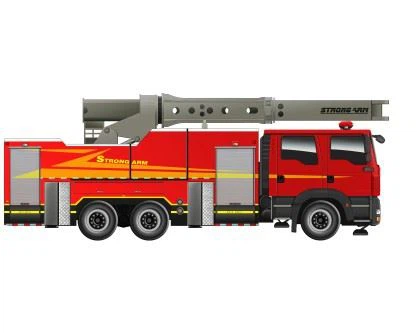Understanding Semi Tank Trailers: Types, Uses, and Maintenance

The semi tank trailer is an essential piece of equipment in the transportation industry, primarily used for carrying liquids such as fuel, chemicals, and food products. This article will explore the various aspects of semi tank trailers, including different types, their construction, applications, maintenance, and best practices for safe operation.
What is a Semi Tank Trailer?
A semi tank trailer, also known as a tank trailer, is a type of truck trailer designed for transporting liquid materials. These trailers are typically attached to a tractor unit and are equipped with one or more tanks, depending on the design and capacity. The shape and structure of a semi tank trailer help in maintaining the stability of heavy liquid loads during transit.
Key Features of Semi Tank Trailers
- Construction: Made from durable materials like aluminum or stainless steel.
- Capacity: Available in various sizes, usually ranging from 3,000 to 11,600 gallons.
- Design: Some designs include a single compartment, while others may have multiple compartments for transporting different types of liquids.
- Safety Features: Equipped with safety valves, pressure relief systems, and reinforced frames.
Types of Semi Tank Trailers
1. Food Grade Tank Trailers
Food grade tank trailers are specially designed to transport edible liquids such as milk, juice, and vegetable oils. These trailers are constructed with materials that meet food safety standards to prevent contamination.
2. Fuel Tank Trailers
Fuel tank trailers are utilized for transporting various types of fuel, including gasoline, diesel, and other petroleum products. These trailers are built to handle volatile liquids, featuring designs that prevent leaks and spills.
3. Chemical Tank Trailers
Designed to carry chemicals, these trailers are often lined with special materials that resist corrosion and chemical reactions. Commonly used in agriculture and manufacturing, chemical tank trailers need to adhere to strict safety guidelines.
4. High-Pressure Tank Trailers
High-pressure tank trailers are engineered to transport gases or liquids at high pressure. These trailers are equipped with specially designed fittings and valves to withstand extreme conditions.
5. Low-Pressure Tank Trailers
Low-pressure tank trailers are used for transporting non-volatile liquids and chemicals at relatively low pressures. Their design focuses on safety and stability, ensuring the safe transport of sensitive products.
Applications of Semi Tank Trailers
1. Fuel Transportation
Semi tank trailers are commonly used in the fuel industry to transport gasoline, diesel, and other fuels to gas stations and distribution points.
2. Food and Beverage Industry
The food and beverage industry relies on food grade tank trailers for transporting liquids such as dairy products, oils, and juices to processing plants and retailers.
3. Chemical Distribution
Chemical tank trailers play a crucial role in the distribution of agricultural chemicals, industrial solvents, and other hazardous materials.
4. Waste Management
Some semi tank trailers are designed for vacuum tank applications, ideal for transporting sewage and industrial waste products.

Choosing the Right Semi Tank Trailer
1. Identify the Product Type
Consider the type of liquid you will be transporting. Different products have distinct requirements regarding trailer materials, design, and safety features.
2. Determine the Capacity
Assess your transportation needs to choose a trailer with the appropriate capacity—look for models that efficiently balance weight and space utilization.
3. Understand Regulations
Familiarize yourself with local and national regulations regarding the transport of hazardous materials and ensure your chosen trailer complies with all safety standards.
4. Consider the Vehicle Compatibility
Ensure that the semi tank trailer you select is compatible with the tractor unit that will be towing it—account for weight ratings, hitch types, and brake systems.
Maintenance and Safety Tips
1. Regular Inspections

Conduct routine inspections of the trailer to identify or prevent potential issues such as leaks, corrosion, or structural damage.
2. Cleaning and Sanitizing
Regularly clean and sanitize food-grade trailers to prevent contamination. Use appropriate cleaning agents that comply with food safety regulations.
3. Check Safety Features
Ensure that all safety features (e.g., pressure relief valves, emergency shut-off systems) are functioning correctly to avoid accidents.
4. Pay Attention to Weight Limits
Always adhere to weight limits specified by manufacturers and regulatory bodies to maintain safe handling and stability on the road.
5. Train Your Personnel
Ensure that all personnel tasked with operating or maintaining semi tank trailers are adequately trained in safety procedures and emergency response.
Real-Life Examples of Semi Tank Trailer Usage
Case Study 1: Fuel Transportation Efficiency

A transportation company utilizing fuel tank trailers reported a 20% increase in efficiency by optimizing routes and maintaining their trailers regularly. This allowed them to meet high customer demand while minimizing delays.
Case Study 2: Food Quality Control
A dairy farm implemented strict cleaning protocols for their food-grade tank trailers. These protocols ensured that no contaminants affected the quality of their milk, leading to better industry compliance and customer satisfaction.
Cost Factors Involved in Semi Tank Trailers
1. Initial Purchase Price
The cost of a semi tank trailer can vary widely based on type, size, and construction materials. On average, prices can range from $30,000 to $100,000.
2. Routine Maintenance Costs
Regular maintenance work can add up over time. Businesses should budget for inspections, repairs, and cleaning regularly to maintain efficiency and safety.
3. Insurance Costs
Insurance is crucial for semi tank trailers, especially those carrying hazardous materials. Factor in these costs when calculating the overall operating expenses.
Environmental Considerations
The transportation of liquids poses several environmental challenges, including spills and leaks. Companies are encouraged to invest in trailers equipped with advanced technologies to minimize environmental impact and ensure compliance with environmental regulations.
Best Practices for Minimizing Environmental Impact
- Use spill containment systems to prevent leaks.
- Regularly maintain and inspect equipment to reduce the risk of accidents.
- Implement training programs on hazardous materials handling for all personnel.
FAQ
1. What materials are semi tank trailers made of?
Semi tank trailers are typically constructed from stainless steel, aluminum, or carbon steel. The choice of material depends on the type of liquid being transported and specific safety regulations.
2. How do I maintain a semi tank trailer?
Regular maintenance includes routine inspections, cleaning, checking safety features, and adhering to scheduled service intervals to ensure safe operation.
3. Can semi tank trailers be used for hazardous materials?
Yes, but they must comply with local, state, and federal regulations concerning hazardous materials transport, which include specific design and labeling requirements.
4. What is the average lifespan of a semi tank trailer?
The average lifespan of a semi tank trailer can range from 10 to 20 years, depending on maintenance, usage, and environmental conditions.
5. Are there specific certifications for drivers of semi tank trailers?
Yes, drivers transporting tank trailers often require specific certifications, such as a hazmat endorsement, ensuring they are trained to handle hazardous materials safely.
